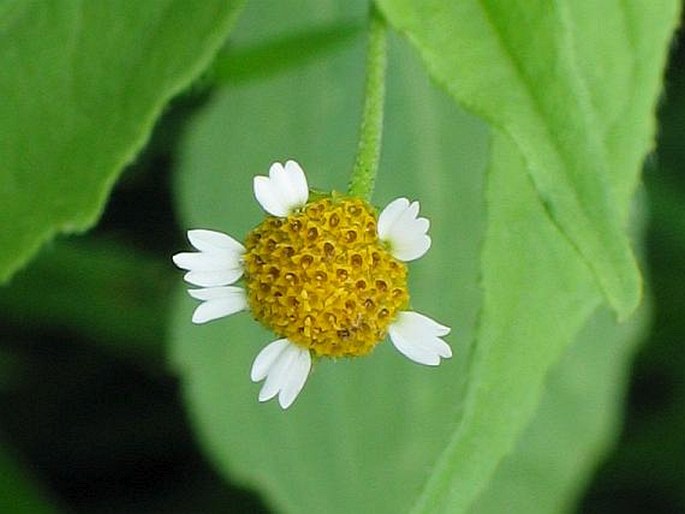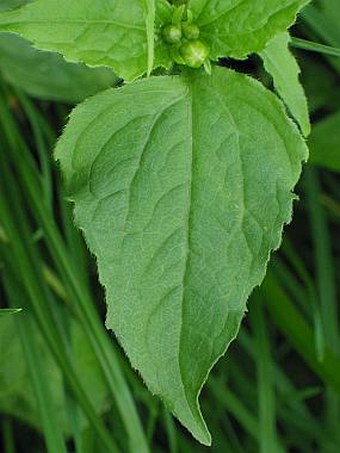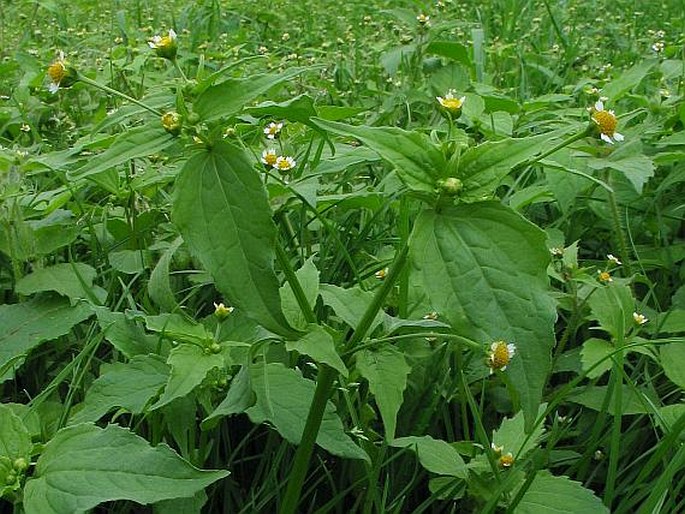Syn.: Galinsoga quinqueradiata Ruiz et Pav., Wiborgia acmella Roth, Wiborgia parviflora (Cav.) Kunth
Family: Asteraceae Bercht. et J. Presl

Distribution: Native to the Andes in South America. Recently it’s been distributed to the temperate and subtropical zones of almost the whole world. In the Czech Republic it grows in almost the whole country from plains to mountainous areas. It was first observed in late 19th century.
Ecology: It grows mainly in anthropomorphically affected places e.g. fields, gardens, fallows, ruins and railway embankments. It prefers light and slightly moist places and neutral to slightly acidic soil rich in nutrients. Flowers from June to October.
Description: An annual, 20–60 cm tall herb. The stem is straight, branched, rounded, glabrous or slightly hairy. The leaves are opposite, petiolate to almost sessile, broadly ovate to lanceolate, up to 6 cm long and 4,5 cm wide, fine-toothed, nearly glabrous. The inflorescence is dichasium composed of capitula. Each capitulum is 3–6 mm in diameter and consists of 20–35 tubular florets and mostly 5 ray florets. The rays are shorter than 1/2 the diameter of the disc, white, with 2 notches at the end. The fruit is an achene.



These images were taken in Czechia, Litíč (September 17, 2005).


